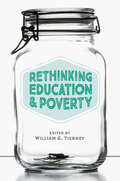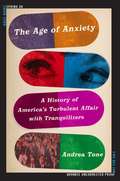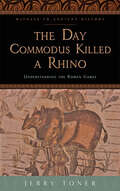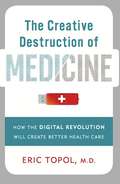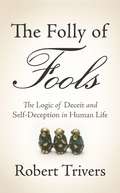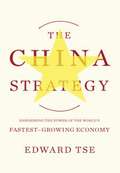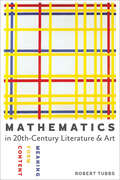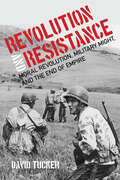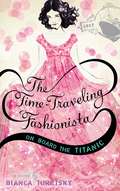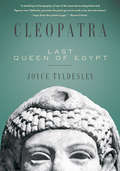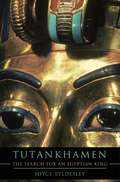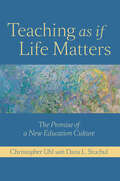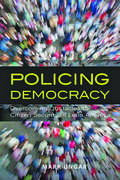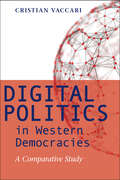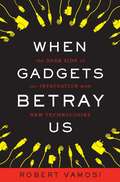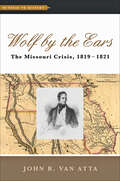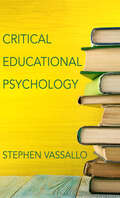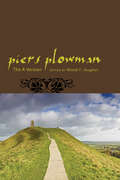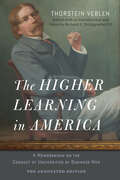- Table View
- List View
Rethinking Education and Poverty: Edited By William G. Tierney
by William G. TierneyIn Rethinking Education and Poverty, William G. Tierney brings together scholars from around the world to examine the complex relationship between poverty and education in the twenty-first century. International in scope, this book assembles the best contemporary thinking about how education can mediate class and improve the lives of marginalized individuals.In remarkably nuanced ways, this volume examines education's role as both a possible factor in perpetuating�and a tool for alleviating�entrenched poverty. Education has long been seen as a way out of poverty. Some critics, however, argue that educational systems mask inequality and perpetuate cycles of poverty and wealth; others believe that the innate resilience or intellectual ability of impoverished students is what allows those individuals to succeed. Rethinking Education and Poverty grapples in turn with the ramifications of each possibility.Throughout these compelling, far-reaching, and provocative essays, the contributors seek to better understand how local efforts to reduce poverty through education interact�or fail to interact�with international assessment efforts. They take a broad historical view, examining social, economic, and educational polices from the postWorld War II period to the end of the Cold War and beyond. Although there is no simple solution to inequality, this book makes clear that education offers numerous exciting possibilities for progress.
The Age of Anxiety: A History of America's Turbulent Affair with Tranquilizers
by Andrea ToneAnxious Americans have increasingly pursued peace of mind through pills and prescriptions. In 2006, the National Institute of Mental Health estimated that 40 million adult Americans suffer from an anxiety disorder in any given year: more than double the number thought to have such a disorder in 2001. Anti-anxiety drugs are a billion-dollar business. Yet as recently as 1955, when the first tranquilizer-Miltown-went on the market, pharmaceutical executives worried that there wouldn't be interest in anxiety-relief. At mid-century, talk therapy remained the treatment of choice. But Miltown became a sensation-the first psychotropic blockbuster in United States history. By 1957, Americans had filled 36 million prescriptions. Patients seeking made-to-order tranquility emptied drugstores, forcing pharmacists to post signs reading "more Miltown tomorrow.” The drug's financial success and cultural impact revolutionized perceptions of anxiety and its treatment, inspiring the development of other lifestyle drugs including Valium and Prozac. In The Age of Anxiety, Andrea Tone draws on a broad array of original sources-manufacturers' files, FDA reports, letters, government investigations, and interviews with inventors, physicians, patients, and activists-to provide the first comprehensive account of the rise of America's tranquilizer culture. She transports readers from the bomb shelters of the Cold War to the scientific optimism of the Baby Boomers, to the "just say no” Puritanism of the late 1970s and 1980s. A vibrant history of America's long and turbulent affair with tranquilizers, The Age of Anxiety casts new light on what it has meant to seek synthetic solutions to everyday angst.
The Day Commodus Killed a Rhino: Understanding the Roman Games (Witness to Ancient History)
by Jerry TonerThe Roman emperor Commodus wanted to kill a rhinoceros with a bow and arrow, and he wanted to do it in the Colosseum. Commodus’s passion for hunting animals was so fervent that he dreamt of shooting a tiger, an elephant, and a hippopotamus; his prowess was such that people claimed he never missed when hurling his javelin or firing arrows from his bow. For fourteen days near the end of AD 192, the emperor mounted one of the most lavish and spectacular gladiatorial games Rome had ever seen. Commodus himself was the star attraction, and people rushed from all over Italy to witness the spectacle. But this slaughter was simply the warm-up act to the main event: the emperor was also planning to fight as a gladiator.Why did Roman rulers spend vast resources on such over-the-top displays—and why did some emperors appear in them as combatants? Why did the Roman rabble enjoy watching the slaughter of animals and the sight of men fighting to the death? And how best can we in the modern world understand what was truly at stake in the circus and the arena? In The Day Commodus Killed a Rhino, Jerry Toner set out to answer these questions by vividly describing what it would have been like to attend Commodus’ fantastic shows and watch one of his many appearances as both hunter and fighter. Highlighting the massive logistical effort needed to supply the games with animals, performers, and criminals for execution, the book reveals how blood and gore were actually incidental to what really mattered. Gladiatorial games played a key role in establishing a forum for political debate between the rulers and the ruled. Roman crowds were not passive: they were made up of sophisticated consumers with their own political aims, which they used the games to secure. In addition, the games also served as a pure expression of what it meant to be a true Roman. Drawing on notions of personal honor, manly vigor, and sophisticated craftsmanship, the games were a story that the Romans loved to tell themselves about themselves.
The Day Commodus Killed a Rhino: Understanding the Roman Games (Witness to Ancient History)
by Jerry TonerThe Roman emperor Commodus wanted to kill a rhinoceros with a bow and arrow, and he wanted to do it in the Colosseum. Commodus’s passion for hunting animals was so fervent that he dreamt of shooting a tiger, an elephant, and a hippopotamus; his prowess was such that people claimed he never missed when hurling his javelin or firing arrows from his bow. For fourteen days near the end of AD 192, the emperor mounted one of the most lavish and spectacular gladiatorial games Rome had ever seen. Commodus himself was the star attraction, and people rushed from all over Italy to witness the spectacle. But this slaughter was simply the warm-up act to the main event: the emperor was also planning to fight as a gladiator.Why did Roman rulers spend vast resources on such over-the-top displaysâ€�and why did some emperors appear in them as combatants? Why did the Roman rabble enjoy watching the slaughter of animals and the sight of men fighting to the death? And how best can we in the modern world understand what was truly at stake in the circus and the arena? In The Day Commodus Killed a Rhino, Jerry Toner set out to answer these questions by vividly describing what it would have been like to attend Commodus’ fantastic shows and watch one of his many appearances as both hunter and fighter. Highlighting the massive logistical effort needed to supply the games with animals, performers, and criminals for execution, the book reveals how blood and gore were actually incidental to what really mattered. Gladiatorial games played a key role in establishing a forum for political debate between the rulers and the ruled. Roman crowds were not passive: they were made up of sophisticated consumers with their own political aims, which they used the games to secure. In addition, the games also served as a pure expression of what it meant to be a true Roman. Drawing on notions of personal honor, manly vigor, and sophisticated craftsmanship, the games were a story that the Romans loved to tell themselves about themselves.
The Creative Destruction of Medicine: How the Digital Revolution Will Create Better Health Care
by Eric TopolHow genomics, big data, and digital technology are revolutionizing every aspect of medicine, from physical exams to drug prescriptions to organ transplantsMobile technology has transformed our lives, and personal genomics is revolutionizing biology. But despite the availability of technologies that can provide wireless, personalized health care at lower cost, the medical community has resisted change. In The Creative Destruction of Medicine, Eric Topol-one of the nation's top physicians-calls for consumer activism to demand innovation and the democratization of medical care. The Creative Destruction of Medicine is the definitive account of the coming disruption of medicine, written by the field's leading voice.
The Folly of Fools: The Logic of Deceit and Self-Deception in Human Life
by Robert TriversA New York Times Notable Book of 2012Whether it&’s in a cockpit at takeoff or the planning of an offensive war, a romantic relationship or a dispute at the office, there are many opportunities to lie and self-deceive—but deceit and self-deception carry the costs of being alienated from reality and can lead to disaster. So why does deception play such a prominent role in our everyday lives? In short, why do we deceive?In his bold new work, prominent biological theorist Robert Trivers unflinchingly argues that self-deception evolved in the service of deceit—the better to fool others. We do it for biological reasons—in order to help us survive and procreate. From viruses mimicking host behavior to humans misremembering (sometimes intentionally) the details of a quarrel, science has proven that the deceptive one can always outwit the masses. But we undertake this deception at our own peril.Trivers has written an ambitious investigation into the evolutionary logic of lying and the costs of leaving it unchecked.
The China Strategy: Harnessing the Power of the World's Fastest-Growing Economy
by Edward TseNo major enterprise or financial institution can avoid doing business with China—if not directly, then through myriad hidden connections. Global businesses either use Chinese resources or sell to and in China or compete with companies that do.Because there's no avoiding China, business leaders need a framework that orders the different (and seemingly contradictory) streams of data that hint at its future. That framework is The China Strategy.In this invaluable book, Edward Tse explains the ever-changing nature of China's business environment, its increasingly complex relationship with the rest of the world, and the global business implications—not just for our current environment but for the next decade.Change, Tse argues, is taking place in non-linearly. Some dimensions (like Chinese entrepreneurship) are expanding exponentially, while others (like the value of China's labor arbitrage) may be reaching a plateau. Eschewing easy explanations, Tse shows how to build and execute a global business strategy in light of these changes, offering practical advice amidst a sea of simple books that offer too-quick solutions.In a world in which a successful business strategy means a successful China strategy, this book is uniquely positioned to help business leaders navigate the “country that cannot be ignored.”
Mathematics in Twentieth-Century Literature and Art: Content, Form, Meaning
by Robert TubbsDuring the twentieth century, many artists and writers turned to abstract mathematical ideas to help them realize their aesthetic ambitions. Man Ray, Marcel Duchamp, and, perhaps most famously, Piet Mondrian used principles of mathematics in their work. Was it mere coincidence, or were these artists simply following their instincts, which in turn were ruled by mathematical underpinnings, such as optimal solutions for filling a space? If math exists within visual art, can it be found within literary pursuits? In short, just what is the relationship between mathematics and the creative arts?In this provocative, original exploration of mathematical ideas in art and literature, Robert Tubbs argues that the links are much stronger than previously imagined and exceed both coincidence and commonality of purpose. Not only does he argue that mathematical ideas guided the aesthetic visions of many twentieth-century artists and writers, Tubbs further asserts that artists and writers used math in their creative processes even though they seemed to have no affinity for mathematical thinking. In the end, Tubbs makes the case that art can be better appreciated when the math that inspired it is better understood. An insightful tour of the great masters of the last century and an argument that challenges long-held paradigms, Mathematics in Twentieth-Century Literature and Art will appeal to mathematicians, humanists, and artists, as well as instructors teaching the connections among math, literature, and art.
Revolution and Resistance: Moral Revolution, Military Might, and the End of Empire
by David TuckerIn this provocative history, David Tucker argues that "irregular warfare";¢;‚¬;€?including terrorism, guerrilla warfare, and other insurgency tactics;¢;‚¬;€?is intimately linked to the rise and decline of Euro-American empire around the globe. Tracing the evolution of resistance warfare from the age of the conquistadors through the United States;€™ recent ventures in Afghanistan and Iraq, Revolution and Resistance demonstrates that contemporary conflicts in the Middle East, Africa, and Asia are simply the final stages in the unraveling of Euro-American imperialism. Tucker explores why it was so difficult for indigenous people and states to resist imperial power, which possessed superior military technology and was driven by a curious moral imperative to conquer. He also explains how native populations eventually learned to fight back by successfully combining guerrilla warfare with political warfare. By exploiting certain Euro-American weaknesses;¢;‚¬;€?above all, the instability created by the fading rationale for empire;¢;‚¬;€?insurgents were able to subvert imperialism by using its own ideologies against it. Tucker also examines how the development of free trade and world finance began to undermine the need for direct political control of foreign territory.Touching on Pontiac;€™s Rebellion of 1763, Abd el-Kader;€™s jihad in nineteenth-century Algeria, the national liberation movements that arose in twentieth-century Palestine, Vietnam, and Ireland, and contemporary terrorist activity, Revolution and Resistance shows how changing means have been used to wage the same struggle. Emphasizing moral rather than economic or technological explanations for the rise and fall of Euro-American imperialism, this concise, comprehensive book is required reading for anyone seeking to understand the character of contemporary conflict.
Revolution and Resistance: Moral Revolution, Military Might, and the End of Empire
by David TuckerIn this provocative history, David Tucker argues that "irregular warfare";¢;‚¬;€?including terrorism, guerrilla warfare, and other insurgency tactics;¢;‚¬;€?is intimately linked to the rise and decline of Euro-American empire around the globe. Tracing the evolution of resistance warfare from the age of the conquistadors through the United States;€™ recent ventures in Afghanistan and Iraq, Revolution and Resistance demonstrates that contemporary conflicts in the Middle East, Africa, and Asia are simply the final stages in the unraveling of Euro-American imperialism. Tucker explores why it was so difficult for indigenous people and states to resist imperial power, which possessed superior military technology and was driven by a curious moral imperative to conquer. He also explains how native populations eventually learned to fight back by successfully combining guerrilla warfare with political warfare. By exploiting certain Euro-American weaknesses;¢;‚¬;€?above all, the instability created by the fading rationale for empire;¢;‚¬;€?insurgents were able to subvert imperialism by using its own ideologies against it. Tucker also examines how the development of free trade and world finance began to undermine the need for direct political control of foreign territory.Touching on Pontiac;€™s Rebellion of 1763, Abd el-Kader;€™s jihad in nineteenth-century Algeria, the national liberation movements that arose in twentieth-century Palestine, Vietnam, and Ireland, and contemporary terrorist activity, Revolution and Resistance shows how changing means have been used to wage the same struggle. Emphasizing moral rather than economic or technological explanations for the rise and fall of Euro-American imperialism, this concise, comprehensive book is required reading for anyone seeking to understand the character of contemporary conflict.
What the Dinosaurs Did Last Night: A Very Messy Adventure (What The Dinosaurs Did Ser. #1)
by Refe Tuma Susan TumaFrom the creative parents who brought the world the web sensation "Dinovember" comes photographic proof of what toys get up to when the rest of the house is asleep. You might have noticed weird things happening in your house. Unexplainable messes. Food all over the kitchen floor. Who could the culprits be? Dinosaurs! Boasting bright and hilarious photographs, along with a story written from the point of view of an older, wiser sibling, Refe and Susan Tuma's picture book documents a very messy adventure that shows just what the dinosaurs did last night.
The Time-Traveling Fashionista (The Time-Traveling Fashionista #1)
by Bianca TuretskyFeatures full page fashion illustrations throughout (on color devices, these are viewable in rich four color!) What if a beautiful dress could take you back in time? Fashion-obsessed Louise Lambert knows everything about the late-great clothing designers and anything vintage. When she receives a mysterious invitation to the Traveling Fashionista Vintage Sale, Louise is so there! Marla and Glenda, two eerie salesladies, convince Louise to don a glittering evening gown, and poof! she finds herself transported onboard a luxurious cruise ship in 1912. Louise relishes the glamorous life and decadent closets of this opulent era until she realizes- she's on the Titanic! Will Louise be able to save herself and change the course of history, or is she destined to go down with the ship?
Sexuality and Our Diversity: Integrating Culture with the Biopsychosocial Version 1.0
by Marcus TyeSexuality and Our Diversity: Integrating Culture with the Biopsychosocial by Marcus Tye explores, with an integrated approach, the complex dimensions of biology, culture, psychology, sociology, history, and philosophy that explain human sexual diversity. While this text is primarily focused on the present, it also explores selected aspects of history to lend perspective to students that contemporary controversies have deep historical roots.
Cleopatra: Last Queen of Egypt (The\chronicles Ser.)
by Joyce TyldesleyThe Romans regarded her as "fatale monstrum”-a fatal omen. Pascal said the shape of her nose changed the history of the world. Shakespeare portrayed her as an icon of tragic love. But who was Cleopatra, really?We almost feel that we know Cleopatra, but our distorted image of a self-destructive beauty does no justice to Cleopatra's true genius. In Cleopatra, Egyptologist Joyce Tyldesley offers an unexpectedly vivid portrait of a skillful Egyptian ruler. Stripping away our preconceptions, many of them as old as Egypt's Roman conquerors, Cleopatra is a magnificent biography of a most extraordinary queen.
Tutankhamen: The Search for an Egyptian King
by Joyce TyldesleyThe discovery of King Tutankhamen&’s tomb in 1922 was perhaps the world&’s most important archaeological find. The only near-intact royal tomb to be preserved in the Valley of the Kings, it has supplied an astonishing wealth of artifacts, spurred a global fascination with ancient Egypt, and inspired folklore that continues to evolve today. Despite the tomb&’s prominence, however, precious little has been revealed about Tutankhamen himself. In Tutankhamen, acclaimed Egyptologist Joyce Tyldesley unshrouds the enigmatic king. She explores his life and legacy as never before, and offers a compelling new window onto the world in which he lived.Tutankhamen ascended to the throne at approximately eight years of age and ruled for only ten years. Although his reign was brief and many of his accomplishments are now lost to us, it is clear that he was an important and influential king ruling in challenging times. His greatest achievement was to reverse a slew of radical and unpopular theological reforms instituted by his father and return Egypt to the traditional pantheon of gods. A meticulous examination of the evidence preserved both within his tomb and outside it allows Tyldesley to investigate Tutankhamen&’s family history and to explore the origins of the pervasive legends surrounding Tutankhamen&’s tomb. These legends include Tutankhamen&’s &“curse&”—an enduring myth that reaffirms the appeal of ancient magic in our modern worldA remarkably vivid portrait of this fascinating and often misunderstood ruler, Tutankhamen sheds new light on the young king and the astonishing archeological discovery that earned him an eternal place in popular imagination.
Teaching as if Life Matters: The Promise of a New Education Culture
by Christopher UhlWhat would it be like to teach as if life matters? To move beyond the typical regimen of classroom exercises, homework, and standardized tests and to guide students through life’s most important lessons? Dissatisfied with traditional educational models, Christopher Uhl and Dana L. Stuchul asked themselves these questions. What they discovered will open the eyes of today’s educators to a whole new way of teaching.The authors promote an approach that fosters self-knowledge, creativity, curiosity, and an appreciation for our planet. Central to their philosophy is the question of what we humans need in order to live meaningful lives. The answer: healthy relationships with ourselves, each other, and the world. Teaching as if Life Matters is an open letter to teachers offering guidance and encouragement for nurturing students in ways that make teaching and learning meaningful. In short, it is a passionate plea for transformative teaching. Informed by the alternative educational philosophies of John Dewey, Maria Montessori, Rudolf Steiner, and Ivan Illich, this book invites teachers and students to participate in a new culture of education.This fascinating and urgently needed book will inspire today’s educators to inspire their students.
Policing Democracy: Overcoming Obstacles to Citizen Security in Latin America
by Mark UngarLatin America’s crime rates are astonishing by any standard—the region’s homicide rate is the world’s highest. This crisis continually traps governments between the need for comprehensive reform and the public demand for immediate action, usually meaning iron-fisted police tactics harking back to the repressive pre-1980s dictatorships. In Policing Democracy, Mark Ungar situates Latin America at a crossroads between its longstanding form of reactive policing and a problem-oriented approach based on prevention and citizen participation. Drawing on extensive case studies from Argentina, Bolivia, and Honduras, he reviews the full spectrum of areas needing reform: criminal law, policing, investigation, trial practices, and incarceration. Finally, Policing Democracy probes democratic politics, power relations, and regional disparities of security and reform to establish a framework for understanding the crisis and moving beyond it.
Digital Politics in Western Democracies: A Comparative Study
by Cristian VaccariDigital politics is shorthand for how internet technologies have fueled the complex interactions between political actors and their constituents. Cristian Vaccari analyzes the presentation and consumption of online politics in seven advanced Western democracies—Australia, France, Germany, Italy, Spain, the United Kingdom, and the United States—from 2006 to 2010. His study not only refutes claims that the web creates homogenized American-style politics and political interaction but also empirically reveals how a nation’s unique constraints and opportunities create digital responses. Digital Politics in Western Democracies is the first large-scale comparative treatment of both the supply and the demand sides of digital politics among different countries and national political actors. It is divided into four parts: theoretical challenges and research methodology; how parties and candidates structure their websites (supply); how citizens use the websites to access campaign information (demand); and how the research results tie back to inequalities, engagement, and competition in digital politics. Because a key aspect of any political system is how its actors and citizens communicate, this book will be invaluable for scholars, students, and practitioners interested in political communication, party competition, party organization, and the study of the contemporary media landscape writ large.
Digital Politics in Western Democracies: A Comparative Study
by Cristian VaccariDigital politics is shorthand for how internet technologies have fueled the complex interactions between political actors and their constituents. Cristian Vaccari analyzes the presentation and consumption of online politics in seven advanced Western democracies—Australia, France, Germany, Italy, Spain, the United Kingdom, and the United States—from 2006 to 2010. His study not only refutes claims that the web creates homogenized American-style politics and political interaction but also empirically reveals how a nation’s unique constraints and opportunities create digital responses. Digital Politics in Western Democracies is the first large-scale comparative treatment of both the supply and the demand sides of digital politics among different countries and national political actors. It is divided into four parts: theoretical challenges and research methodology; how parties and candidates structure their websites (supply); how citizens use the websites to access campaign information (demand); and how the research results tie back to inequalities, engagement, and competition in digital politics. Because a key aspect of any political system is how its actors and citizens communicate, this book will be invaluable for scholars, students, and practitioners interested in political communication, party competition, party organization, and the study of the contemporary media landscape writ large.
When Gadgets Betray Us: The Dark Side of Our Infatuation With New Technologies
by Robert VamosiTechnology is evolving faster than we are. As our mobile phones, mp3 players, cars, and digital cameras become more and more complex, we understand less and less about how they actually work and what personal details these gadgets might reveal about us.Robert Vamosi, an award-winning journalist and analyst who has been covering digital security issues for more than a decade, shows us the dark side of all that digital capability and convenience. Hotel-room TV remotes can be used to steal our account information and spy on what we've been watching, toll-booth transponders receive unencrypted EZ Pass or FasTrak info that can be stolen and cloned, and our cars monitor and store data about our driving habits that can be used in court against us.When Gadgets Betray Us gives us a glimpse into the secret lives of our gadgets and helps us to better understand--and manage--these very real risks.
Wolf by the Ears: The Missouri Crisis, 1819–1821 (Witness to History)
by John R. Van AttaFrom the early days of the republic, American leaders knew that an unpredictable time bombâ€�the question of slaveryâ€�lay at the heart of national politics. An implicit understanding between North and South helped to keep the issue at bay: northern states, where slavery had been set on course for extinction via gradual emancipation, tacitly agreed to respect the property rights of southern slaveholders; in return, southerners essentially promised to view slaveholding as a practical evil and look for ways to get rid of it. By 1819–1820, however, westward expansion had brought the matter to a head. As Thomas Jefferson wrote at the time, a nation dealing with the politically implacable issue of slavery essentially held the "wolf" by the earsâ€�and could neither let go nor hang on forever.In Wolf by the Ears, John R. Van Atta discusses how the sectional conflict that led to the Civil War surfaced in the divisive fight over Missouri statehood. The first organized Louisiana Purchase territory to lie completely west of the Mississippi River and northwest of the Ohio, Missouri carried special significance for both pro- and anti-slavery advocates. Northern congressmen leaped out of their seats to object to the proposed expansion of the slave "empire," while slave-state politicians voiced outrage at the northerners’ blatant sectional attack. Although the Missouri confrontation ultimately appeared to end amicably with a famous compromise that the wily Kentuckian Henry Clay helped to cobble together, the passions it unleashed proved vicious, widespread, and long lasting.Van Atta deftly explains how the Missouri crisis revealed the power that slavery had already gained over American nation building. He explores the external social, cultural, and economic forces that gave the confrontation such urgency around the country, as well as the beliefs, assumptions, and fears that characterized both sides of the slavery argument. Wolf by the Ears provides students in American history with an ideal introduction to the Missouri crisis while at the same time offering fresh insights for scholars of the early republic.
Critical Educational Psychology: An Examination Of Foundational Features Of The Field (Educational Psychology Ser. #15)
by Stephen VassalloThe field of critical studies recognizes that all knowledge is deeply embedded in ideological, cultural, political, and historical contexts. Although this approach is commonly applied in other subfields of psychology, educational psychology;¢;‚¬;€?which is the study of human learning, thinking, and behavior in formal and informal educational contexts;¢;‚¬;€?has resisted a comprehensive critical appraisal. In Critical Educational Psychology, Stephen Vassallo seeks to correct this deficit by demonstrating how the psychology of learning is neither neutral nor value-free but rather bound by a host of contextual issues and assumptions. Vassallo invites teachers and teacher educators, educational researchers, and educational psychologists to think broadly about the implications that their use of psychology has on the teaching and learning process. He applies a wide variety of interdisciplinary approaches to examine the psychology of learning, cognitive development, motivation, creativity, discipline, and attention. Drawing on multiple perspectives within psychology and critical theory, he reveals that contemporary educational psychology is entangled in and underpinned by specific political, ideological, historical, and cultural contexts.A valuable resource for anyone who relies on psychology to interact with, assess, and deliberate over others, especially school-aged children, Critical Educational Psychology resists neatly packaged theories, models, and perspectives that are intended to bring some basis and certainty to pedagogical decision-making. This book will enhance teachers;€™ ethical decision-making and start important new conversations about power and opportunity.
Critical Educational Psychology
by Stephen VassalloThe field of critical studies recognizes that all knowledge is deeply embedded in ideological, cultural, political, and historical contexts. Although this approach is commonly applied in other subfields of psychology, educational psychology;¢;‚¬;€?which is the study of human learning, thinking, and behavior in formal and informal educational contexts;¢;‚¬;€?has resisted a comprehensive critical appraisal. In Critical Educational Psychology, Stephen Vassallo seeks to correct this deficit by demonstrating how the psychology of learning is neither neutral nor value-free but rather bound by a host of contextual issues and assumptions. Vassallo invites teachers and teacher educators, educational researchers, and educational psychologists to think broadly about the implications that their use of psychology has on the teaching and learning process. He applies a wide variety of interdisciplinary approaches to examine the psychology of learning, cognitive development, motivation, creativity, discipline, and attention. Drawing on multiple perspectives within psychology and critical theory, he reveals that contemporary educational psychology is entangled in and underpinned by specific political, ideological, historical, and cultural contexts.A valuable resource for anyone who relies on psychology to interact with, assess, and deliberate over others, especially school-aged children, Critical Educational Psychology resists neatly packaged theories, models, and perspectives that are intended to bring some basis and certainty to pedagogical decision-making. This book will enhance teachers;€™ ethical decision-making and start important new conversations about power and opportunity.
Piers Plowman: The A Version
by Míċeál F. VaughanThe fourteenth-century Piers Plowman is one of the most influential poems from the Age of Chaucer. Following the character Will on his quest for the true Christian life, the three dream narratives that make up this work address a number of pressing political, social, moral, and educational issues of the late Middle Ages. Míċeál F. Vaughan presents a fresh edition of the A version, an earlier and shorter version of this great work.Unlike the B and C versions, there is no modern, affordable edition of the A version available. For the first time in decades, students and scholars of medieval literature now have access to this important work. Vaughan’s clean, uncluttered text is accompanied by ample glossing of difficult Middle English words. An expansive introduction, which includes a narrative summary of the poem, textual notes, detailed endnotes, and a select bibliography frame the text, making this edition ideal for classroom use.This is the first classroom edition of the A version since Thomas A. Knott and David C. Fowler’s celebrated 1952 publication. Based on an early-fifteenth-century manuscript from the University of Oxford’s Bodleian Library, Vaughan’s text offers a unique rendition of the poem, and it is the first modern edition not to attribute the poem to William Langland. By conservatively editing one important witness of Piers Plowman, Vaughan takes a new generation of students to an early version of this great medieval poem.
The Higher Learning in America: A Memorandum on the Conduct of Universities by Business Men (Reprints Of Economic Classics Ser.)
by Thorstein VeblenSince its publication in 1918, Thorstein Veblen’s The Higher Learning in America has remained a text that every serious student of the American university must confront. Intellectual historian Richard Teichgraeber brings us the first scholarly edition of Veblen’s classic, thoroughly edited, annotated, and indexed. An extensive introduction discusses the book’s composition and publishing history, Veblen’s debts to earlier critics of the American university, and the place of The Higher Learning in America in current debates about the American university.Veblen’s insights into the American university system at the outset of the twentieth century are as provocative today as they were when first published. Insisting that institutions of higher learning should be dedicated solely to the disinterested pursuit of knowledge, he urged American universities to abandon commitments to extraneous pursuits such as athletics, community service, and vocational education. He also believed that the corporate model of governanceâ€�with university boards of trustees dominated by well-to-do businessmen and university presidents who functioned essentially as businessmen in academic dressâ€�mandated unsavory techniques of salesmanship and self-promotion that threatened to reduce institutions of higher learning to the status of competitive business enterprises.With a detailed chronology, suggested readings, and comprehensive notes identifying events, individuals, and institutions to which Veblen alludes, this volume is sure to become the standard teaching text for Veblen’s classic work and an invaluable resource for students of both the history and the current workings of the American university.
